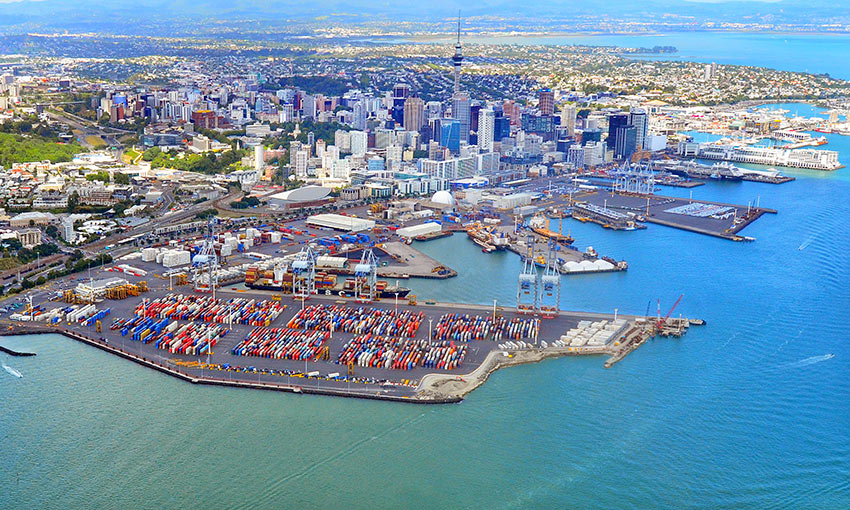“THE FIRST half of this financial year has been incredibly hard for the business, but we can now look forward with some optimism,” Ports of Auckland chief executive Tony Gibson said when announcing the company’s half-year results.
“That is not to say the second half won’t be difficult – it will – but we have plans in place to resolve the issues that affected us in this period. We expect the current issues to be behind us in the second half of calendar 2021 and to be able to lift performance in FY 2022.”
Over the six months to 31 December, the port’s container volumes fell by 12%, compared with the previous corresponding period, to 416,232 TEU.
The port’s revenue declined by 7% over the period to NZ$114 million, and its NPAT declined 21% to NZ$13.6 million.
The pandemic looms
Mr Gibson said there has been a single big issue that has loomed large over the six-month period: global supply-chain congestion as a result of COVID-19. He said this has had flow-on effects to Auckland’s container terminal automation project and to shipping through the container terminal.
“Phase one of automation was meant to go-live in March 2020, but days before the go-live date the country went into Level 4 lockdown and work had to stop,” Mr Gibson said.
“The project is back up and working now with systems all running to plan. As soon as pavement remediation can be done, a full terminal roll-out will happen.
Mr Gibson said across the month of September and into October, the events of the year combined to produce a perfect storm, reducing container terminal throughput and delaying shipping through Auckland.
“With COVID lockdown, we put our people into work bubbles to keep them safe – but this added complexity to our operations and reduced the number of effective work hours,” he said.
“Training time was lost and combined with strong competition from the construction industry we have struggled to maintain our talent pool. Crane drivers are a particular case.”
The chief executive went on to say COVID caused normal supply-chain patterns to disappear, and they haven’t come back.
“Other global events have had an impact. Strikes at ports in Australia disrupted schedules and unexpectedly high volumes around the world meant that by August we were seeing more ships running off-schedule than normal,” he said.
“As New Zealand’s largest import port and the first port of call for many services, the increase in import demand had a significant impact.”
Mr Gibson said there had been an unusual patter of demand and continuous flows of ships in the lead-up to Christmas He said in a normal year, there are busy and quite periods during the week and throughout the year, and this is what the port’s rosters and staffing levels are designed around.
“This year, with no quiet periods, there was no time in the week when days off didn’t have an impact and staff were consistently working longer hours. In the interest of staff welfare, we changed the roster to reduce maximum work hours and improve days off with a consequent impact on productivity,” he said.
“The nature of the job we face at the terminal has changed, so we are adapting. While we’ve been able to hire enough new people for the lower skilled roles and have a good training pipeline for straddle drivers, finding and/or training crane drivers has been difficult. For the first time ever, we have looked overseas to recruit.”
Not all doom and gloom
However, Mr Gibson said there had been some bright spots over the half year. He said automation is progressing well. More than 70 ships have been through the automated yard, with more than 40,000 containers handled.
“While COVID has presented some big challenges, the multi-cargo operations team and the third-party stevedores who work the ships in this part of the port have done an outstanding job,” he said.
“Trade to the Pacific Islands has continued unabated; cement volumes remain strong and other bulk imports like grains and gypsum have continued steadily. Car volumes have bounced back from a fall in the first six months of calendar 2020 and the newly completed car handling building has been well used, demonstrating its value to the motor vehicle supply chain.”

